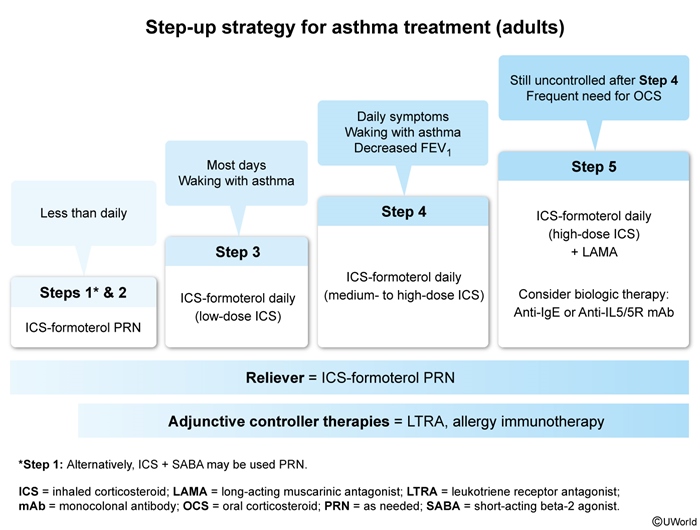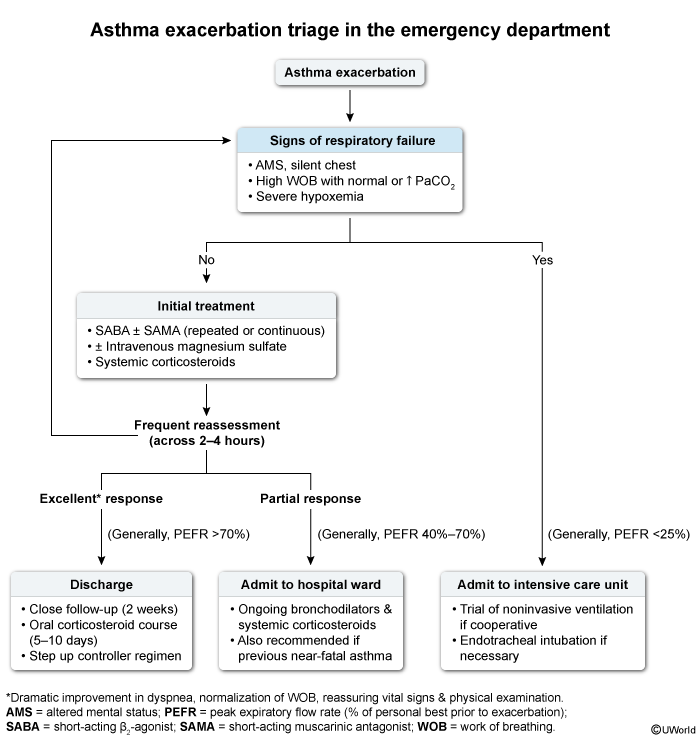Asthma: Management
Article Sections
Introduction
Management of asthma can range from relatively simple (eg, a patient who responds well to initial therapy) to very difficult (eg, a patient with chronic corticosteroid dependence and a complex social situation). With slight variations, all pharmacotherapy guidelines are based on a step-up approach (Figure 1) in which treatments are intensified (dose, number of agents) until symptoms are acceptably controlled.
Chronic asthma
Short-acting beta-2 agonists (SABAs) (eg, albuterol) have been used for decades for as-needed relief of intermittent asthma symptoms, and they remain reasonable for patients with low-risk asthma features (eg, systemic corticosteroids never needed for exacerbation, symptoms mainly with exercise). More recently, asthma treatment has evolved toward including an inhaled corticosteroid (ICS) at every severity level, reflecting the fact that even intermittent asthma represents a degree of airway inflammation, which is better controlled by ICS than by bronchodilators.
Continue Learning with UWorld
Get the full Asthma: Management article plus rich visuals, real-world cases, and in-depth insights from medical experts, all available through the UWorld Medical Library.
Figures

